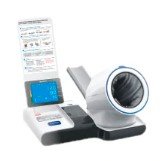Ensuring Proper Integration of Lab Results into Electronic Health Records: Best Practices for Phlebotomists
Summary
- Proper integration of lab results into Electronic Health Records is crucial for accurate patient information management.
- Phlebotomists play a significant role in this process by ensuring the accuracy and efficiency of laboratory data entry.
- Utilizing best practices and adhering to Regulations can help phlebotomists maintain high standards in managing patient information.
The Importance of Lab Results Integration
Effective patient care relies on access to accurate and timely lab results. These results inform medical decisions, treatment plans, and overall patient management. In today's digital age, Electronic Health Records (EHRs) have revolutionized the way Healthcare Providers store and retrieve patient information. Proper integration of lab results into EHRs is essential for streamlined and efficient patient care.
Challenges in Lab Result Integration
Despite the benefits of EHRs, there are challenges in integrating lab results seamlessly. Some common issues include:
- Incorrect data entry leading to misinformation.
- Fragmented systems that do not communicate effectively.
- Privacy and security concerns regarding patient information.
The Role of Phlebotomists
Phlebotomists are integral to the process of lab result integration. They are responsible for collecting blood samples from patients, labeling them accurately, and ensuring proper documentation. Phlebotomists work closely with laboratory technicians to transmit results efficiently to Healthcare Providers for interpretation and diagnosis.
Best Practices for Phlebotomists
To ensure the proper integration of lab results into EHRs, phlebotomists can follow these best practices:
Use Standardized Procedures
- Adhere to established protocols for specimen collection and handling.
- Ensure proper labeling of specimens to avoid misidentification.
- Follow guidelines for documentation and record-keeping.
Verify Patient Information
- Confirm patient identity before sample collection.
- Double-check patient information on labels and requisition forms.
- Communicate any Discrepancies to the appropriate personnel for resolution.
Maintain Data Integrity
- Enter lab results accurately into the system without errors.
- Monitor for duplicate entries or missing information.
- Report any issues with data integrity to the laboratory supervisor.
Regulatory Compliance
Phlebotomists must also be aware of regulatory requirements governing the management of patient information. HIPAA Regulations protect patient privacy and dictate how Healthcare Providers handle sensitive data. Compliance with these Regulations is essential to maintain confidentiality and trust with patients.
HIPAA Compliance
Key aspects of HIPAA compliance for phlebotomists include:
- Protecting patient information from unauthorized access.
- Obtaining Patient Consent for the disclosure of personal health information.
- Maintaining confidentiality when sharing lab results with other Healthcare Providers.
Quality Assurance
Quality assurance programs in laboratories ensure that phlebotomists follow best practices and meet regulatory standards. Continuous training and education help phlebotomists stay current with industry trends and advancements in technology.
Conclusion
Phlebotomists play a critical role in ensuring the proper integration of lab results into Electronic Health Records for accurate patient information management. By following best practices, maintaining data integrity, and complying with Regulations, phlebotomists can contribute to the delivery of high-quality patient care.

Disclaimer: The content provided on this blog is for informational purposes only, reflecting the personal opinions and insights of the author(s) on the topics. The information provided should not be used for diagnosing or treating a health problem or disease, and those seeking personal medical advice should consult with a licensed physician. Always seek the advice of your doctor or other qualified health provider regarding a medical condition. Never disregard professional medical advice or delay in seeking it because of something you have read on this website. If you think you may have a medical emergency, call 911 or go to the nearest emergency room immediately. No physician-patient relationship is created by this web site or its use. No contributors to this web site make any representations, express or implied, with respect to the information provided herein or to its use. While we strive to share accurate and up-to-date information, we cannot guarantee the completeness, reliability, or accuracy of the content. The blog may also include links to external websites and resources for the convenience of our readers. Please note that linking to other sites does not imply endorsement of their content, practices, or services by us. Readers should use their discretion and judgment while exploring any external links and resources mentioned on this blog.
